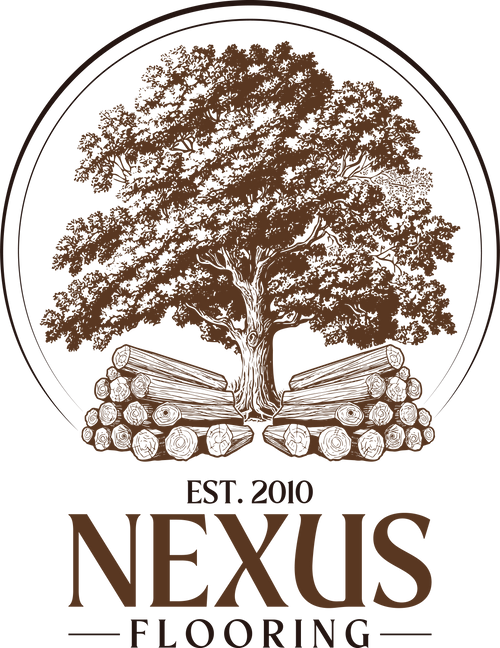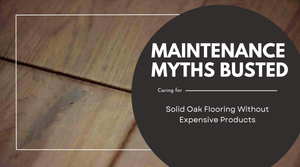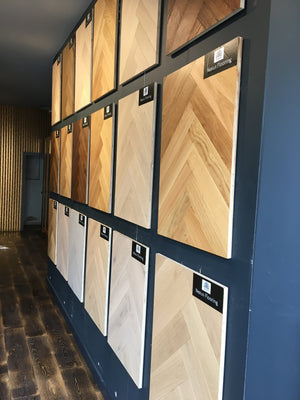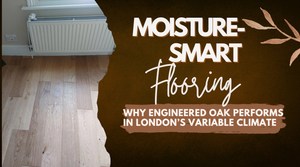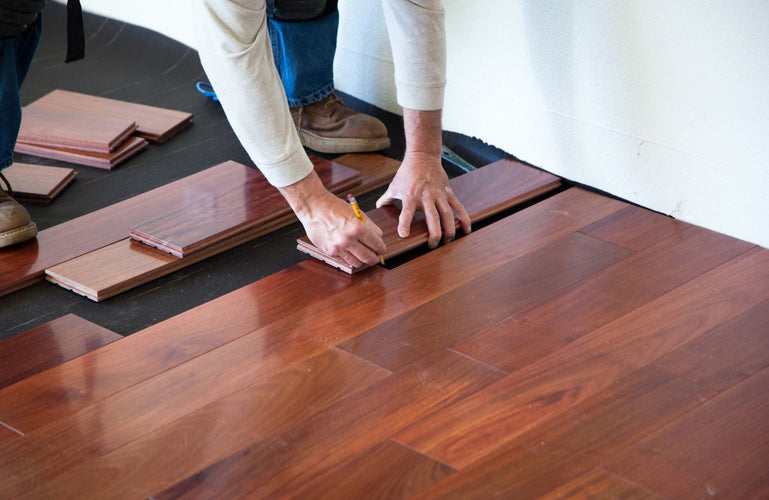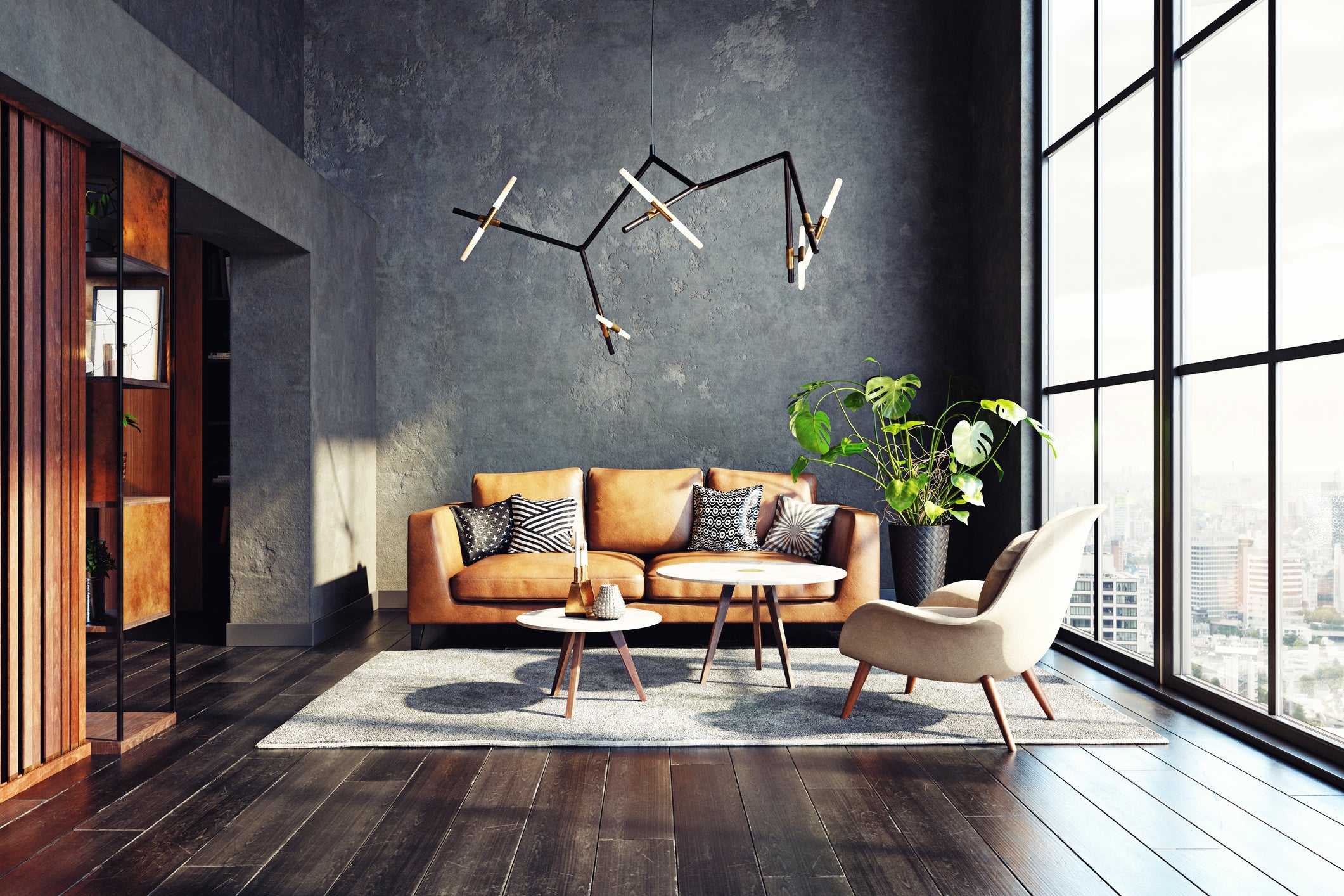Solid wood flooring is also known as real wood or hardwood flooring – consists of planks milled from a single piece of timber. Each plank, such as one of the common solid oak flooring in the UK, carries its ability with its grain and texture, contributing to the authentic warm feel of natural-wood floors. Timber lumber floors are great because they maintain uniformity throughout, contrary to laminate and engineered types. In fact, a quality plank of oak or walnut flooring can go on for decades or even a lifetime if well kept. Floor specialists emphasize that solid wood floors age really well and probably also increase the resale value of the house they are in.
What Is Solid Wood Flooring and How Is It Made?
Solid wood flooring is just what the name implies: planks of full-thickness lumber from a single wood species. These planks are typically 18 to 20mm thick, while the edges join by way of tongue and groove. Logs are sawed into boards, after which these boards are dried in order to reduce moisture content. After that, each board is planned and profiled to fit precisely with the adjoining boards. The end product is a real wood flooring product that is genuine wood and has no artificial layer or veneer.
What makes solid wood different from others?
A solid wood flooring is fully made of real timber, unlike laminate (composite core with printed wood-look surface) or vinyl. Engineered wood, with its plywood base and thin hardwood veneer, can be sanded a very limited number of times; solid wood can be sanded and refinished thousands of times. Comparing wood and ceramic or porcelain tiles, wood, in a way, is warmer underfoot and absorbs sound better, offering peaceful and cozy ambience; while tiles are superior in water resistance and wear. Therefore, they lack the natural charm and aesthetic that genuine wood bestows. Simply put, solid wood flooring is viewed and esteemed as a high-level material, standing apart similar to the best tiles for both authenticity and longevity.
What types of wood are used?
Common hardwoods used for solid wood flooring are oak, walnut, maple, cherry, and exotics. Oak (European or American) happens to be the favourite in the UK- it provides a fine balance among beauty, durability, and cost. (White Oak has a Janka hardness of about 1360, whereas Red Oak is approximately 1290.) Walnut has a classically darker finish and is softer (Janka about 1010), so homeowners often lay down area rugs to protect the walnut hardwood floor. Teak is a tropical hardwood (Janka about 1000) that is oily by nature and thereby highly water-resistant, hence one rarely comes across its use except in a few high-end projects. Other woods include maple, ash, or softwood pine- pine planks are also wood flooring for that matter, though they are softer. In reality, for a majority of UK homes, oak or ash (more often as engineered wood) is preferred, for they are locally available and are proven to perform well under British climatic conditions.
What Are the Advantages of Solid Wood Flooring?
Wood floors have many advantages for homeowners. A few of the major ones are:
-
Timeless Appeal: Each plank has its own unique grain and colour; no two floors are alike. For instance, oak planks may range in colour from pale honey to rich brown. Acting to bring warmth and character into a room through such natural variation, manufactured flooring can hardly be of any use. Their classic appeal suits most styles of decor, whether it is traditional or contemporary. Moreover, if tastes do change, then a simple sanding or staining of the floor into a new colour or a fresh coat of finish will restore it.
-
Durability and Longevity: Solid hardwood floors are very resilient. Most high-grade hardwoods, particularly oak, can take heavy foot traffic. Most solid wood floors can be sanded and refinished several times over a matter of decades, thus renewing their appearance whenever wear occurs. Periodic refinishing and care will maintain oak or walnut wood floors for half a century or more, say experts in flooring. In most cases where there are deep gouges or scratches, they are repairable by sanding and re-staining instead of an entire replacement.
-
Ease of maintenance: Very little has to be done daily. Sometimes sweeping or vacuuming and, less frequently, damp-mopping with some light wood cleaning solution may be carried out. Unlike carpets, solid wood floors do not trap dust and allergens. Because it is solid wood, owners do not have to wax or polish most modern finishes: just keep it clean. Treat spills immediately to prevent staining. Basically, simple preventive care such as recoating with a finish keeps the floor looking smooth and lustrous.
-
Warm-up and comfort: Wood feels very warming on the standing feet than tiles or stones and senses a little spring against a strong vinyl or laminate. That being so, standing for long on it will provide relief for a tired pair of feet and legs. Wood also retains heat quite well, so it stays pretty warm and works quite well with an underfloor heating arrangement. Solid wood floors in living areas and bedrooms bring a warm and comfortable feel to the room.
- Value addition: Solid hardwood floors are usually featured as a luxury item in a house. Real estate agents claim that solid hardwood floors usually make a house more appealing to the buyer and increase its resale value. There are some estimates suggesting that quality solid wood floors can return anywhere between 70 and 80 percent of an initial investment. In other words, buyers are willing to pay more for a home with genuine hardwood floors because they know that the chances are quite slim that they will have to reside on their own.
What Are the Different Types of Solid Wood Flooring?
Solid wood flooring features many species and varieties. Among the most commonly used are:
-
Oak (solid oak flooring): The classic. Oak floors are hard, stable, and handsome with an open grain texture that can range from pale (white oak) to medium brown (red oak). Oak stains beautifully-from gray to white or walnut-any color really-so that it does fit into almost any decor. Many homeowners in the UK prefer either engineered or solid European oak planks because of the best of looks, and other properties superb durability offers.
-
Walnut: A very fine wood with dark chocolate and auburn tones. American or European walnut floors are somewhat softer than oak (hence, they dent somewhat more), but they’re given an “up-scale” feel with that dramatic darkness and often find their use in living areas, dining areas, or studies. Walnut floors cost more, and homeowners usually place rugs over these in high traffic areas as they show wear faster.
-
Teak and Exotic Hardwoods: Teak, mahogany, cherry, or Brazilian walnut (Ipe) are donated with exotic beauty. The high natural oil content of teak makes it water-resistant, even termite-resistant; hence, it finds much application in elite kitchens or outdoor patios (where hardwood floors are desired). These exotic hardwoods are very hard and durable, but their price ranges from 2 to 3 times that of oak. They could look really spectacular if chosen carefully, though.
-
Other wood species: Maple flooring (light cream color) creates a clean, contemporary feel to the interiors. Ash (pale blond) is another good choice. Hard maple or hickory has a very fine texture and is lighter in color than oak. Many suppliers in the UK also stock ash or beech engineered floors for variety.
- Softwood floors: Pine and spruce are technically solid wood flooring but are softer. They are seldom found in main living spaces because of their denting propensity but are favored in country cottages or children's playrooms, probably the cheaper option. Softwood floors age by forming a rich patina.
Best for UK homes: Because of Britain's relatively humid climate, wood stability is of the essence. Oak, both solid and engineered, is generally considered adequate for most rooms and is in wide supply with UK suppliers. Teak or other tropical woods are all good for interiors, but because of the cost, they are usually held for statement areas. Most installers in the UK would prefer to install engineered wood in the kitchen and basement and keep the solid oak for the living room and bedroom. The best wood, after all, is the one that suits the use of the room and of course the aesthetic; oak and walnut planks are often chosen by UK homeowners for warmth and durability.
How Long Does Solid Wood Flooring Last?
Solid wood floors are known to last forever. Hardwood flooring, which can last 50 years or more if kept dry and well maintaine. These are not carpet or vinyl, which wears out in front of your eyes. Sanding with a refinish is basically resetting the floor into a brand new condition. By all accounts, from the practical side, a solid wood floor could indeed "last for a lifetime." Solid wood floors are almost indestructible. Provided they are kept dry and well-maintained, hardwood floors can stand for 50 years or more. Wood cannot be distanced in a year or two, unlike carpet or vinyl. With every sanding and refinishing, the wood floor retains its brand new status. Simply put, given that conditions are generally normal, the experts propose that a solid wood floor indeed "can last a lifetime."
The other one has a merely technical limit: a plank has a finite thickness, so after a finite amount of sanding, you are left with raw wood. For example, generally, a solid oak floor 20 mm thick can undergo 3-4 sandings. This means you just have to sand whenever you notice heavy wear, usually every 7-10 years, and yet the floor will last for decades. Likewise, a floor really in good shape after 20 years would be quickly sanded and sealed into a new-looking one again. Of course, scratches and dents are mostly buffed during every sanding. In summary, in good care, a solid wood floor can last much more than any other flooring-more than the lifetime of its own owner!
Where Can You Install Solid Wood Flooring in a Home?
Solid wood flooring is very versatile and can be used in many different areas in the house, but some general rules of thumb are as follows:
-
Living areas and bedrooms: Suitable for solid wood. These areas tend to have stable humidity levels, therefore solid planks do not warp. Wood is chosen because of its warmth and acoustic properties that mute sound and provide a cozy feel to these areas.
-
Kitchens: Usually, engineered wood is more suitable for kitchen installation, especially in places where spills or moisture could be common. In a place with high foot traffic, such as the kitchen, you would prefer a sturdier engineered wood.
-
Bathrooms and basements: Wood does not suit wet areas like bathrooms or basements, as moisture can cause slabs to warp. If well sealed, however, solid wood, especially teak, may be used for half baths or utility rooms given that there is proper ventilation; otherwise, tile or stone usually serves better for areas prone to high humidity.
What Are the Advantages of Solid Wood Flooring?
Solid wood flooring offers multiple advantages, making it a top choice for homeowners looking for long-lasting, beautiful, and timeless flooring solutions. Here's a breakdown of its benefits:
-
Natural Beauty and Variety: The natural grains and textures create heat, depth, and character within a room. Living woods like oak, walnut, and teak present a whole palette of choices to suit design requirements. Especially repeated in the design culture is oak due to its fine grain, versatility, and capacity to accommodate any color stain.
-
Longevity and Durability: Wood floors, unlike other floorings, can last for decades provided they are under some wear-and-tear. These may be sanded and refinished to undo the effects of wear and tear and can further form patina that adds to their jaded character over the years, thus making them worth the long-term investment especially for a home with pets or kids.
-
Increases Property Value: Solid wood floors can increase the value of a home to resell. Potential buyers tend to offer more due to the impression, which wood floors exert, of a quality finish that will stand the test of time. Reports reveal that houses with hardwood floors can command selling prices as much as 3-5% more than those with carpet or other flooring options.
-
Maintenance: It might be said that well-maintained solid wood flooring is easy to care for. On a routine basis, sweeping along with an occasional thorough wipe-down should suffice. Unlike carpet fibers that trap dust and allergens, wood floors are easy to maintain and, in comparison, are more hygienic. When touched up, refinishing is a delicate way to bring the look back to life, unlike replacing carpet or tile.
- Use: Wood finds space in almost every room-the bedroom, the living room, even the kitchen if maintained properly. The great thing about hardwood is that it suits all interior settings- both modern and traditional-and it bloomed to all styles of furniture and décor.
What Are the Different Types of Solid Wood Flooring?
Solid wood flooring has types that vary to offer distinct features and looks, depending on the wood chosen. The most popular of solid woods are:
-
Oak flooring: This is the commonly used wood for solid wood floors. It is hard-wearing, not so costly, and comes with two main types—red oak and white oak. Red oak might be a warmer wood and therefore more pronounced with its grain, while white oak might be a little more stable and hence lighter in grain. In many cases, white oak is selected due to its moisture resistance, which, thus, becomes an excellent choice for homes situated in areas of varying humidity levels.
-
Walnut flooring: Walnut being a rich, dark color, carries the bolt of style and class. It presents a smooth grain that gives it a pampered appearance under oak and thus is always good to go for high-end spaces. Since walnut is relatively softer than oak, it remains more prone to scratches. For heavy foot traffic in homes, hence, walnut is going to demand extra care and maintenance.
-
Maple Flooring: Maple, pale and creamy in color, exhibits a smooth grain. Maple is harder than oak and walnut, making it hugely desirable for spaces with great foot traffic. The clean and subtle looks of maple fits well with modern as well as contemporary interior setup.
-
Teak Flooring: With its almost indestructible durability and resistance to water, teak can be used to great effect in bathroom spaces and rarely in kitchens (where engineered wood is commonly used in preference). The deep golden colors of teak serve any room with luxurious appeal, let alone the fact that teak tends to be way more costly than oak.
-
Cherry and Ash Flooring: Cherry possesses warm reddish-brown colors that tend to get darker with age, whereas ash is pale with a very distinct grain. Both these types of woods give very distinctive appearances and would suit a homeowner looking for something less common but equally durable.
How Long Does Solid Wood Flooring Last?
One major plus with solid wood flooring is its durability. It can last a lifetime when given proper care. For instance, many solid oak flooring can actually look good with untarnished scratches for an upward of 50 years or more! Over time, in time, wood develops a patina which many homeowners feel good about; in fact, the process adds to or develops the wood's character and appearance in a good way, whereas the aging processes seem to make wood look better with age.
Solid hard wood floors need to be maintained throughout their life. It can look good with regular cleaning, preventing water from pooling and periodic refinishing. Refinishing can occur as infrequently as every 7 or 10 years, depending on traffic and wear, leaving you with floors that look new. Solid wood flooring is long-lasting: solid wood flooring can be sanded and refinished multiple times the life span of carpet or laminate floor. Thick solid wood planks can be sanded and refinished over and over and over again, meaning your hardwood floor can and probably will outlive you.
Where Can You Install Solid Wood Flooring in a Home?
Solid wood floors are highly adaptable and may be used in almost every room of a house. And thus the best application:
-
Living Rooms and Bedrooms: These are perfect for wood floors. Wood's natural heat and comfort tie up very well with creating a cozy ambiance. Also, it's good in fighting noise, as sound gets absorbed way better than harder surfaces such as tile or stone.
-
Hallways and Staircases: Solid wood is excellent in these areas where there is a large volume of foot traffic. It bears up very well against wear and tear. Plus, the wood's natural beauty sets the tone for welcoming and attraction in the hallways and staircases.
-
Kitchens: Hardwood floors usually do well when installed in kitchens, only that solid woods may not be a lasting option for this high-traffic, moisture-prone area. Spills tend to damage these woods, especially an improperly sealed hardwood floor. So, if you really want solid wood, better go with hardwoods such as teak, which are moisture-resistant-native hardwoods, and also apply a good sealant.
- Bathrooms and Basements: Due to high humidity levels in these areas, solid wood flooring is not considered a suitable option. The moisture present may cause warp or swelling of the wood. However, if you would really want to see a wooden effect, engineered wood would be a better alternative to solid wood for the bathroom because it is more stable in humid environments.
Generally, solid wood floors are best exposed to dry and climate-controlled ambiance. With proper upkeep and maintenance, beauty and value can be added to the property when installed throughout the house.
How Is Solid Wood Flooring Installed?
Installation of solid wood flooring requires careful handling of each step in the six-procedure approach to secure each wood piece in its place and proper alignment. Installation methods that can be used depending on the needs of your household and types of wood chosen. Here are the generally accepted methods.
-
Nail Down or Staple Down: This is by far the most traditional technique in installing solid wood flooring. The boards are nailed or stapled to the subfloor, which generally consists of plywood. This method is advantageous in houses having wooden subflooring or solid surface beneath the wood. The best option to keep the boards in place is to nail or staple; thus, it is mostly used with solid oak floorings or other hard dense woods.
-
Glue Down: This procedure involves gluing solid wood planks directly to the subfloor with a special-type strong adhesive. It is very much applied when the subfloor is of concrete or when one desires to stay away from nails and staples. The result of a glue installation method is quick and easy; however, one must use the right type of glue to ensure that the glue will last a lifetime and not deteriorate with time.
-
Floating Floor: Among the patterns for real wood flooring, one can choose to include the floating floor installation wherein planks click or lock together without attachment to the subfloor. It is fundamentally meant for engineered wood but can also be an option for solid wood floor installations. It is a way of installing wood floors in rooms where one does not want to disturb the existing subfloor or need quicker installation.
- End-to-End Installation: Whether floating, nailing, or gluing down, installation should always be done in a staggered fashion so that every joint is not lining up with the joint above or below it. This adds strength to the floor and provides a good aesthetic finish. The wood must be acclimated properly before installation so that it does not expand or contract with a change in humidity.
How Do You Clean and Maintain Solid Wood Flooring?
Proper cleaning and upkeep will forever retain the beauty and longevity of hardwood floors. Some tips on how to clean and maintain your floors are as follows:
-
Sweep or Vacuum Often: The little grits, dust, and other debris could batter the wood surface; hence it is good practice to sweep or vacuum more often. Using a soft-bristled brush or a vacuum with an attachment designed for wood floors will loosen the dirt. Do not use beater bars or aggressive-type attachments in your vacuum as they will do more harm than good.
-
Damp Mopping: When mopping for more thorough cleaning, go for the damp mop kind, wherein the floor shouldn't become soaking wet. Water is the death of wood, so ensure no liquid is allowed to stand on its surface. There are cleaners that are mild and specially made for wooden floors or a water-and-vinegar solution would do for a natural cleaner; the trick is to dry off immediately afterward.
-
Gentle Treatment: Avoid the use of caustic chemicals and harsh scrubbing since that leaves great damages to wood finish. For cleaning solid wood hardwood floors, use pH neutral cleaners.
-
Sanding and Refinishing: Over time, solid oak flooring or any other solid hardwood flooring will show wear, especially in heavily trafficked areas, where sanding and refinishing bring the wood back into beauty. Solid wood floors may be refinished every 7-10 years depending on wear.
-
Protection: Rugs and furniture pads should be used to help prevent floor scratches and dents. Avoid putting sharp objects onto the wood floor and dragging heavy furniture across it. Ensure also that humidity levels are properly maintained in the room since wood flooring expands if moisture is abundant or contracts when dry.
Is Solid Wood Flooring Eco-Friendly?
Solid wood floors can be eco-friendly—if you’re mindful. It’s all about where the wood comes from (look for responsibly managed forests!) and how it’s made. Local sourcing cuts transportation emissions, and minimal processing keeps things low-impact. Bonus? They last decades, so you’re not tossing out flimsy floors every few years. Mother Nature approves… with the right choices.
-
Responsible harvesting: Solid wood flooring, especially when timber sourced responsibly, can be an environmentally friendly alternative. Look for wood bearing certificates such as those by the Forest Stewardship Council (FSC), which stipulates that the wood was harvested sustainably, with forests maintained while taking care that biodiversity is safeguarded and environmental damage is minimized.
-
Natural Materials: Solid wood is a natural material, quite distinct from synthetic options such as laminate or vinyl. Since it is biodegradable and free of harmful grammars or plastics, it is considered a greener choice. Besides, solid wood floors would actually increase indoor air quality by not releasing volatile organic compounds (VOCs) that some synthetic materials emit.
-
Longevity: Long living upon maintenance-wise or with some of those treatments, such as solid oak flooring, prevents the frequent replacement mechanism of certain ecological aspects in solid wood flooring. Less replacement certainly speaks for less disposal; hence, more durable floors of solid wood would be lessening the environment loads from the initiation of sufficient flooring.
-
Carbon Sequestration: Through trees, which provide wood to make flooring, CO2 is absorbed from the atmosphere. By choosing sustainable wood flooring, you ensure that forests remain healthy in balancing the carbon footprint.
-
Recycling and Reuse: A wood floor can be resanded, refinished, and reused, thus granting it a much longer service life. In case the flooring has become unserviceable in your premises, the solid wood flooring can be recycled into furniture, cabinetry, or other products, thus lessening the requirement for fresh raw materials.
FAQ's
Q. Is solid wood flooring termite-proof?
A termite-proof floor does not exist with the wood; however, termites can infest wood unless it is treated. The use of treated or chemically protected wood, nevertheless, reduces the chances of termite damage.
Q. Can solid wood floors be painted or stained?
Of course, a solid wood floor may be painted or stained to change its appearance. Staining enhances the wood's natural grain, while painting gives it an entirely new look, yet both require proper surface preparation and upkeep for their longevity.
